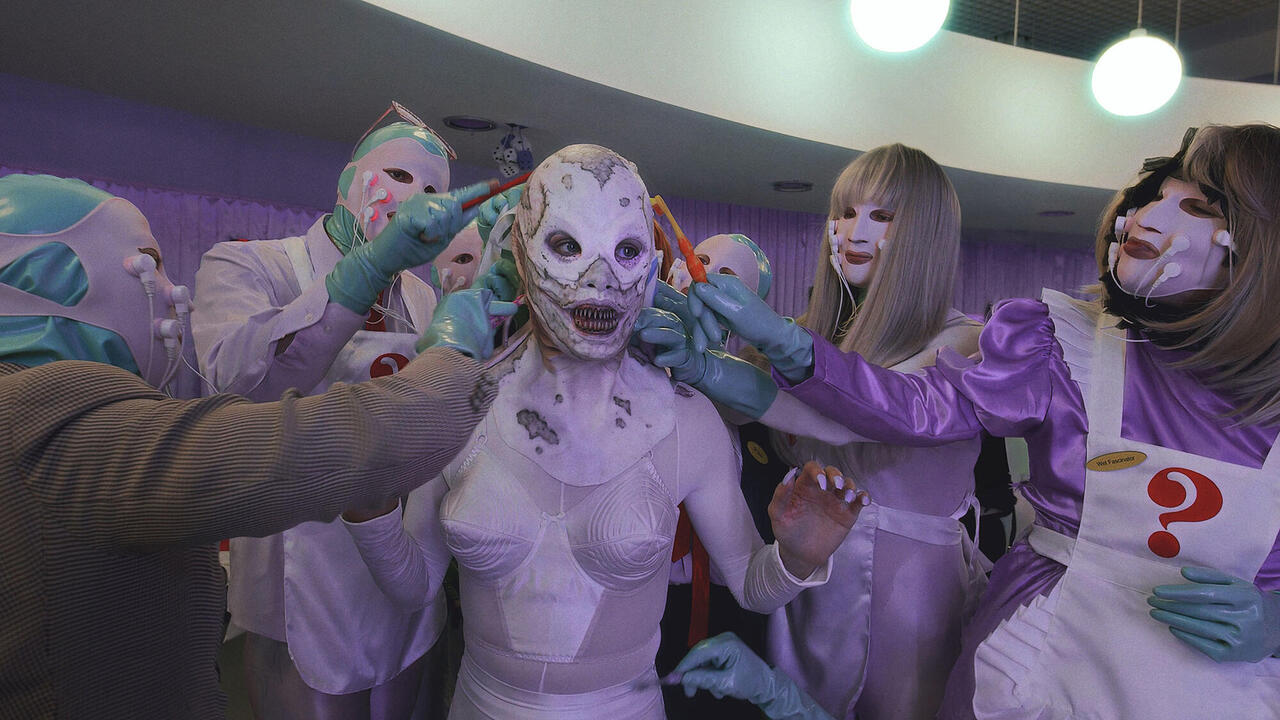Cristina Iglesias Moulds Alien Forms
At Marian Goodman, Los Angeles, the artist’s extraterrestrial works are haunted by real-world doom
At Marian Goodman, Los Angeles, the artist’s extraterrestrial works are haunted by real-world doom

Recently, I diagnosed myself with trypophobia, or the fear of small holes. I took the diagnostic on TikTok after visiting Cristina Iglesias’s latest exhibition, ‘Ellipsis’, at Marian Goodman, Los Angeles. The test had five images, including a picture of a hand riddled with tiny, round lesions and a close-up of a strawberry. They all evoked feelings of terror and disgust, sensations that experts say are linked to what these holes suggest: a flimsy boundary between one dimension and another, proximity to the unknown. Iglesias’s work picks at similar fears, moulding earthy materials into alien forms: a porous meteorite fills with liquid from an invisible source (Lunar Meteorite (Littoral), 2023); a gravel mass becomes a rocky cyclone, carving a deep crater into one gallery wall (Turbulence, 2023). These geologic fissures appear as membranes – or missives – between two not-so-distant worlds, rupturing the boundaries between the natural and the manmade, the real and the fake. Iglesias replicates natural habitats while subverting their typical attributes, creating sculptures, reliefs and drawings that suggest the unintended consequences of human intervention in nature.
A wall text excerpted from Stanislaw Lem’s Solaris (1961) that describes various earthly mutations – an ocean covered by mist, a tree gushing ‘blood and quicksilver’ – provides an apt frame for the alchemical works on view. One labyrinthine installation takes the Polish sci-fi novel as a direct reference: the hanging, multipart structure of The Pavilion of Dreams (Elliptical Galaxy) (2016) contains 52 braided, iron-wire screens whose criss-cross patterning vaguely resembles letters that the press release claims are fragments of text from Solaris. Iglesias’s objects are both recognizable and elusive, tracing landscapes that may appear easily understood, but remain just beyond understanding.

Science fiction infuses the exhibition, signalling the artist’s interest in constructs that simultaneously cohere to and depart from logic. In Entwined V (2017), silvery roots crawl – against gravity – across a gallery wall, their growth interrupted by spurts of gold fungus and metal screws. Iglesias figures destruction and erosion as evidence of industry, each work featuring marks created by human intervention. ‘Cave Studies’ (2022), a series of monotypes, displays large copper panels with portions clouded with turquoise rust, an effect created by acid applied via silkscreen to the unstable, reactive metal surface. The resulting works resemble aerial views of half-destroyed canyons, their rock choked by an unknown parasite. A set of gouache and ink prints, ‘The Shore and the Ocean’ (2023), depicts desolate, rocky shorelines from above, a perspective that renders beachy locales foreign and dangerous. Iglesias’s ruins appear increasingly plausible: they re-enact conditions that evoke the surreal effects of climate change.

In one of the most common trypophobia videos, a girl kneels next to a tropical plant, her shoulder covered in a dense cluster of round, hard bugs. The bugs, though, are just pinto beans, her screams of pain merely a ploy for views. It is still disturbing: the video acts as an odd microcosm for larger horrors, illuminating the increasingly thin line between unusual threat and manmade illusion. Iglesias’s work accomplishes a similar feat: it haunts because of its cogent connection to real-world doom. Here, a mountain becomes a whirlpool, a tree’s roots take flight to the sky. Iglesias’s visions of the earth may not be comforting, but they have the ring of truth.
Cristina Iglesias’s ‘Ellipsis’ is on view at Marian Goodman, Los Angeles, until 27 January.
Main Image: Cristina Iglesias, Lunar Meteorite (Littoral), 2023, bronze, hydraulic mechanism and water, 99.1 × 167.6 × 139.7 cm. Courtesy: the artist and Marian Goodman Gallery; photograph: Brica Wilcox





















